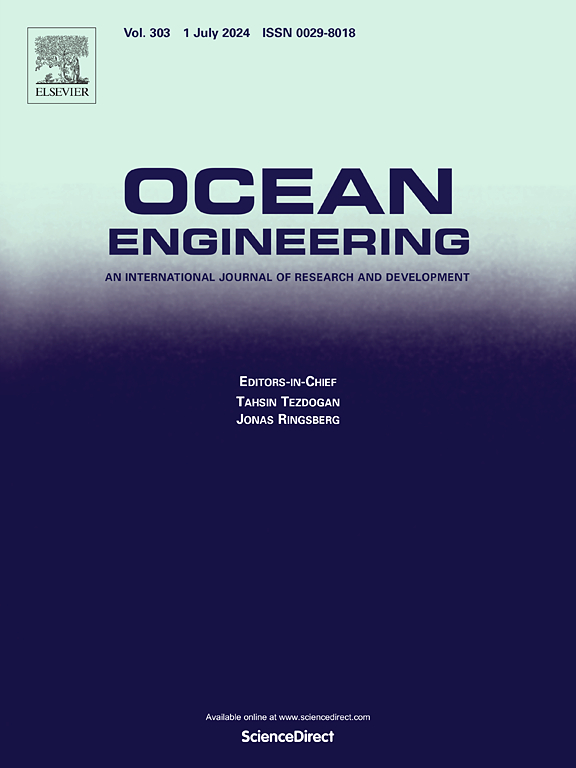非线性波浪作用下固定式单桩海上风力发电机的高频共振
IF 5.5
2区 工程技术
Q1 ENGINEERING, CIVIL
引用次数: 0
摘要
本文提出了一种高保真水弹性框架,用于分析波浪激励下单桩支撑海上风力发电机组的非线性动力响应。非线性波浪载荷的计算采用势流理论和弱散射假设,其中水动力是通过对湿表面上的压力积分得到的。为了有效地求解结构响应,提出了边界元-有限元耦合方法。通过绕垂直圆柱体的非线性波衍射模拟验证了该模型。计算的波浪荷载与物理实验、解析解、频域模型和完全非线性势流结果进行了基准测试,证明了极好的一致性,并证实了模型的可靠性。将验证的框架用于评估国家可再生能源实验室底部固定的5mw OWT的三次谐波共振。参数研究表明,共振响应对波幅、频率和结构阻尼高度敏感。研究结果为海洋极端环境下OWT的抗疲劳和安全设计提供了重要的指导。本文章由计算机程序翻译,如有差异,请以英文原文为准。
High-frequency resonance of bottom-fixed monopile-supported offshore wind turbines under nonlinear waves
This study presents a high-fidelity hydroelastic framework for analyzing the nonlinear dynamic response of monopile-supported offshore wind turbines (OWTs) under wave excitation. Nonlinear wave loads were computed using the potential flow theory in conjunction with the weak-scattering assumption, in which hydrodynamic forces were obtained by integrating the pressure over the wetted surface. A coupled boundary element–finite element method (BEM–FEM) was developed to resolve structural responses efficiently. The model is validated using nonlinear wave diffraction simulations around a vertical cylinder. The computed wave loads were benchmarked against physical experiments, analytical solutions, frequency-domain models, and fully nonlinear potential flow results, demonstrating excellent agreement and confirming model reliability. The validated framework was used to assess the third-harmonic resonance of a bottom-fixed National Renewable Energy Laboratory 5-MW OWT. Parametric studies revealed that the resonance response is highly sensitive to the wave amplitude, frequency, and structural damping. The results provide important insights into the nonlinear resonance mechanisms and offer practical guidance for the fatigue-resistant and safe design of OWT in extreme marine environments.
求助全文
通过发布文献求助,成功后即可免费获取论文全文。
去求助
来源期刊

Ocean Engineering
工程技术-工程:大洋
CiteScore
7.30
自引率
34.00%
发文量
2379
审稿时长
8.1 months
期刊介绍:
Ocean Engineering provides a medium for the publication of original research and development work in the field of ocean engineering. Ocean Engineering seeks papers in the following topics.
 求助内容:
求助内容: 应助结果提醒方式:
应助结果提醒方式:


